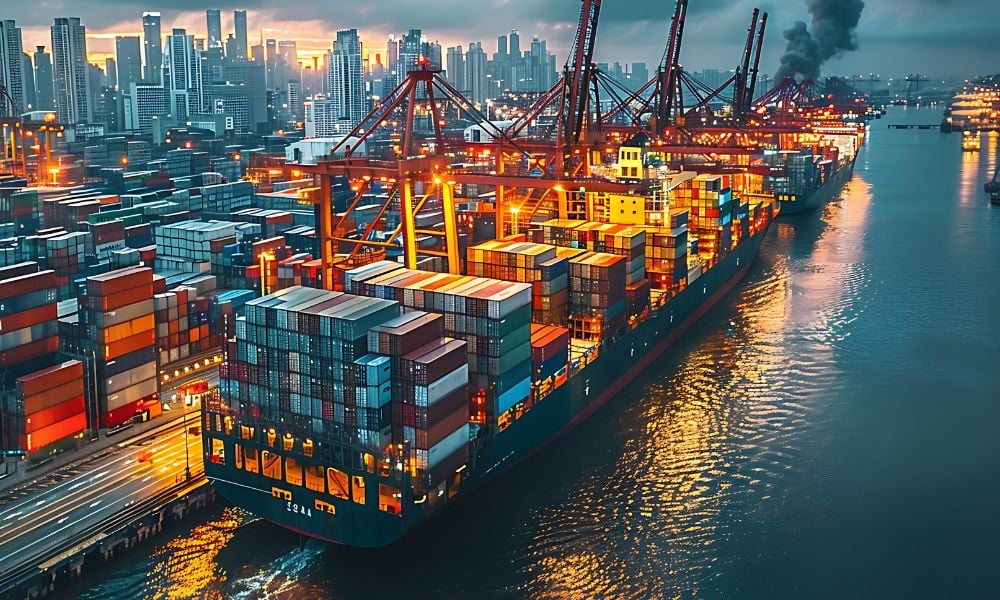Senior PM outlines how certain sectors have responded to tariffs, emphasizes the opportunities and risks created by a fluid situation

Given President Trump’s focus on industrial and manufacturing sectors of the US economy in his trade policy, the recent round of earnings reports from major automakers and capital goods manufacturers may prove a useful instruction as to how companies are managing current tariff levels. The topline takeaway for investors may well be that these companies are finding ways to cope. While many, like Stellantis, are posting significant losses, they have tended to outperform the modest expectations set for them and find oblique ways to manage a new global trade environment.
James Learmonth explains that these companies’ relative success remains somewhat fraught. The Senior Portfolio Manager at Harvest ETFs, responsible for the Harvest Industrial Leaders Income ETF (HIND), explained that ongoing uncertainty around trade policy has created an overhang for many manufacturers. While industrial services companies have buoyed performance for the whole industrial sector, he noted how those capital goods manufacturers who have been more exposed to tariff risk have coped in this environment and why the risk of a change in tariff policy could be less advantageous.
“So far, things are not that bad. Companies are taking hits, but they're not as big of an impact on earnings as they had originally expected earlier in the year, and that's due to a combination of things,” Learmonth says. “Obviously we had the original Liberation Day tariff scaled back pretty dramatically, and so compared to the estimates that most of these companies were giving the impacts have been much more modest than what we they had originally thought… They're also finding ways to reduce costs in other areas, whether it's, you know, scaling back operations or generally trying to become more efficient.”
Learmonth notes the example of a company called Fastenal, and industrial supply company making fasteners. Before the tariffs the US-based company would import all the fasteners they planned to sell in North America to the United States and distribute them across US, Mexican, and Canadian markets from there. Now, despite this being a less efficient supply chain, it is more profitable for Fastenal to import product separately into the US, Canada, and Mexico to prevent Canadian and Mexican customers from getting a double hit on tariffs. Learmonth uses the example to show some of the oblique ways industrial companies are managing the cost and risk associated with tariffs.
Despite more expensive supply chains and cost additions from tariffs, Learmonth notes that hard CPI data has yet to fully reflect the idea that all these cost increases might be passed on to consumers. He explains that many goods manufacturers are asking suppliers to eat some of the cost addition, eating some of it themselves, and only passing a portion on to the end customer. GM, he notes, made similar noise about supply chain reorganization and finding ways to manage tariff impacts.
While it seems like tariff levels are currently manageable for many of these companies, Learmonth notes that the situation is far from settled. Come the next trade deadline on August 1st, it’s possible that the world will face a whole new round of tariffs to throw things into disarray. Much of the broader market rally seen since the market lows following ‘liberation day’ were due to the rollback of many of those tariffs. Should they resurge to new heights, there would be significant fallout for industrials and manufacturers.
Knowing what we know now, Learmonth does see some opportunities emerging in the industrials sector due to the US President’s goal of reshoring US manufacturing. He notes that demand for construction materials and machinery should increase as companies build new facilities in the United States. Railroads, too, should see demand as the US looks inwards and ships goods within its continent-spanning landmass, rather than from port to port.
While the trade regime remains uncertain Learmonth notes that the behaviour of the automakers may prove instructive. These companies, he explains, are maximizing their existing US manufacturing capacity under executive orders to make more domestically. However, because they don’t know when these tariffs might lift or what a new administration might do, they don’t yet appear willing to completely dismantle their offshore supply chains only to have that incredibly expensive decision prove inefficient under a new administration.
“The shorter term amounts to a lot of uncertainty and dislocation in the market. You can get these sell offs in the markets, like we saw in April. If August 1 comes around and these new higher level tariffs actually do get put in place we could see another dislocation in the market, where markets sell off due to this uncertainty,” Learmonth explains. “Over the longer term, both customers and companies, once they learn the rules of the game that they're trying to play, can make adjustments… It's just a matter of finding that level of uncertainty or that level of certainty, where you can plan for the future.”


